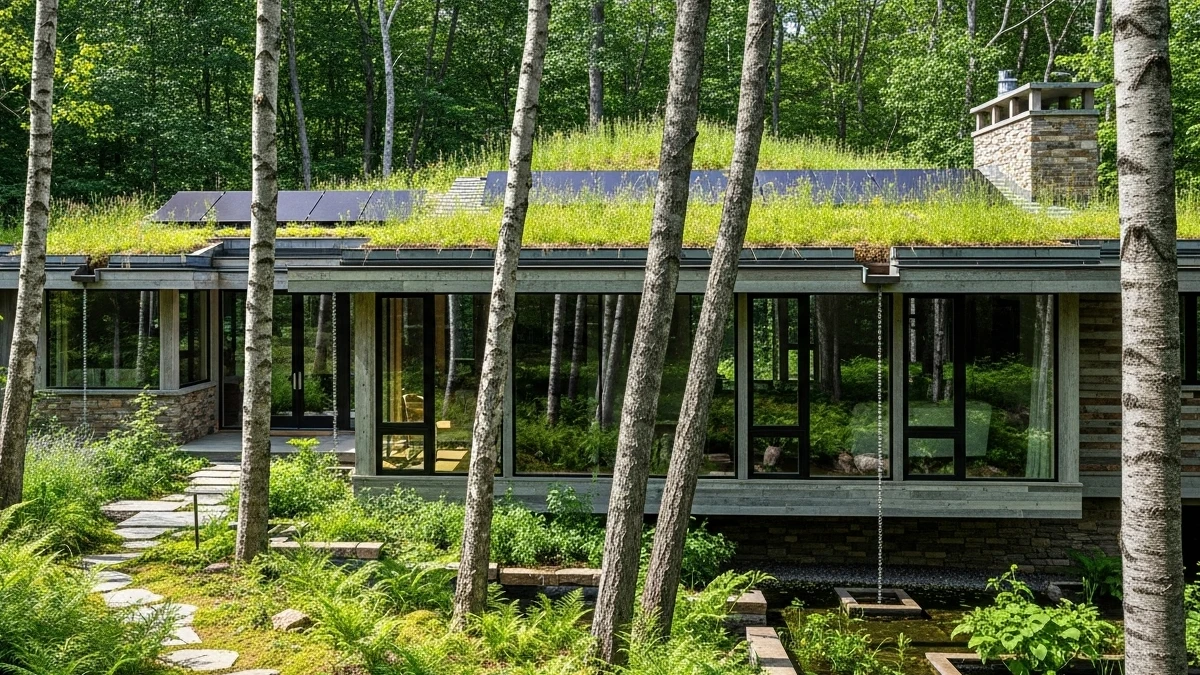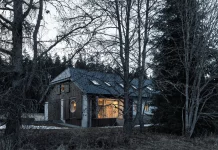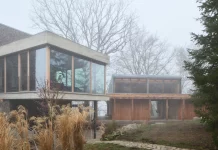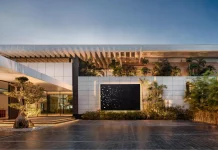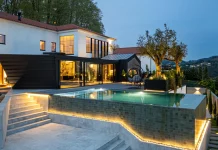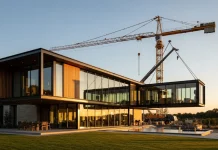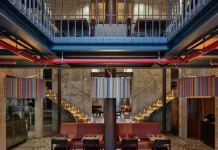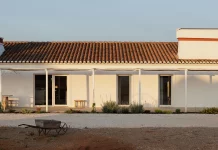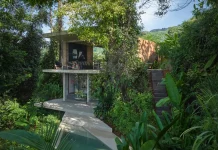2025 feels like standing at the intersection of urgency and possibility. Climate‑driven disasters are accelerating, global housing shortages continue, and digital technologies are racing ahead. Innovative architecture trends are no longer optional – they are fundamental to building a resilient, healthy, and culturally vibrant future. The architectural trends that dominate 2025 are shaped by emerging technologies and by social and environmental imperatives. This article identifies ten influential architecture trends shaping 2025. Each section explains what the trend is, why it matters, and how designers can apply it. You will also find original commentary to provoke thought and encourage sustainable and human‑centred solutions.
1. Sustainable and Regenerative Design
From minimising harm to giving back
Sustainability has matured into a regenerative ethic. Architecture trends for 2025 see buildings designed to improve the environment rather than merely reduce impact. Regenerative design strategies include green roofs that double as pollinator gardens, façades that harvest rainwater, and urban developments that create self‑sustaining ecosystems. Low‑carbon and recycled materials – mass timber, hempcrete, and recycled industrial waste – reduce embodied carbon while supporting biodiversity. Rather than being afterthoughts, these elements become the starting point for conception.
Why regenerative design matters
As climate change intensifies, the environmental footprint of the built environment must shrink. Regenerative design shifts the goal from “doing less harm” to actively restoring ecological systems. Natural habitats restored through living roofs or vertical gardens improve urban air quality, support urban wildlife, and create microclimates that mitigate heat. Choosing renewable materials like bamboo or cork reduces resource depletion, while mycelium‑based insulation and recycled steel cut greenhouse‑gas emissions. Regenerative buildings also cultivate community pride and create inspiring places to live and work.
How to design regeneratively
Ask yourself: how can a building give more to its surroundings than it takes? Start with site analysis to identify opportunities for habitat restoration or rainwater capture. Use materials that sequester carbon and specify products with environmental product declarations. Integrate ecosystems at multiple scales – from façade plantings to urban forests. Consider designing structures for deconstruction to enable the reuse of components at the end of life. Regenerative design requires collaboration across disciplines, but the results demonstrate how architecture trends can heal the planet while creating beautiful spaces.
2. Net‑Zero Buildings and Renewable Integration
The rise of net‑zero energy and water
Net‑zero buildings – those that produce as much energy as they consume – are no longer futuristic. Renewable energy integration is a key part of sustainable architecture trends in 2025. Smart building systems, automated lighting, advanced HVAC controls, and energy monitoring tools help reduce energy use. Reflective roofs and solar panels reduce cooling loads and allow roofs to become power plants. Net‑zero extends beyond energy: rainwater harvesting and greywater recycling systems conserve water.
Why net‑zero matters
Energy prices continue to rise, and climate policies demand radical cuts in operational carbon. Net‑zero buildings reduce operating costs, increase resilience, and set a new standard for carbon‑neutral living. Combined with decarbonized grids, net‑zero buildings accelerate the transition to a renewable future. They also help clients achieve corporate environmental, social, and governance (ESG) targets.
How to achieve net‑zero
Start with energy efficiency: optimize orientation, insulation, and building envelopes. Passive design strategies such as smart site orientation, natural ventilation, and high‑performance insulation reduce reliance on mechanical heating and cooling. Integrate renewable systems such as building‑integrated photovoltaics or small wind turbines to generate power. Use battery storage to shift energy use and enable buildings to operate off‑grid. Install rainwater harvesting, greywater recycling, and low‑flow fixtures to reduce water consumption. Net‑zero projects often cost more up front but deliver long‑term savings and resilience.
3. Smart Buildings and AI Integration
Buildings that learn and adapt
The next wave of architecture trends harnesses artificial intelligence (AI), Internet of Things (IoT) sensors, and building automation. Smart buildings like Amsterdam’s Edge employ extensive IoT sensor arrays to monitor light, movement, temperature, and CO₂ levels, optimising energy use and user comfort [allthingsurban.net]. Designers are using AI more and more. AI assists in generating multiple design options, optimising materials, running solar or daylight simulations, and analyzing large datasets.
Why AI matters
AI and smart systems promise efficiency, quality, and improved human experience. Augmented reality and virtual reality technologies overlay digital information on physical environments, allowing designers to check whether a scheme fits its context. AI can optimize building performance, forecast maintenance, predict structural performance, and even aid in urban planning by considering climate data. For building operations, AI‑powered building automation systems control HVAC, lighting, and security. KODE Labs’ system at Austin’s RiverSouth tower uses sensors to predict and maintain energy efficiency, optimizing cycles and anticipating maintenance issues [gbdmagazine.com].
How to design smart buildings
Ask: where can sensors add value, and how will data be used? Use machine learning algorithms to analyse occupant patterns and adjust building systems accordingly. Incorporate AI‑powered BIM tools that generate and evaluate design options quickly. Use AR/VR to involve clients and stakeholders and ensure design decisions are understood. Smart architecture trends are about more than gadgets; they require careful planning of data privacy, user consent, and cybersecurity.
4. Modular and Prefabricated Construction
Prefabrication goes mainstream
Modular construction – building components off‑site in controlled factories – has shifted from niche to mainstream. Prebuilt materials offer faster timelines, reduced waste, and lower labor costs. ArchDaily reports that modular construction can reduce project timelines by 30–50 % through simultaneous on‑site and off‑site work [archdaily.com]. It cuts costs and ensures quality because factory conditions yield precision and consistency. Modular buildings are also flexible: they can be expanded, reconfigured, or relocated.
Why modular matters
The global housing crisis demands faster, more affordable housing solutions. Modular construction addresses labor shortages, reduces on‑site disruption, and improves safety. It reduces waste and can integrate energy‑efficient materials, aligning with sustainability goals. Modular construction is also pivotal in emergencies: China built a 1,000‑bed hospital in 10 days during the COVID‑19 pandemic [archdaily.com], demonstrating its speed and scalability.
How to apply modular design
Think about which building elements could be prefabricated without compromising aesthetics. Off‑site manufacturing demands early collaboration and coordination to ensure mechanical systems and finishes integrate smoothly. Building information modelling (BIM) and AI support this coordination. For housing, accessory dwelling units (ADUs) highlight modular possibilities; ADUs now incorporate sophisticated features like climate‑responsive orientation, cross‑ventilation modelling, and dynamic glazing to reduce energy use. Factory‑built ADUs reduce construction time by 40–60 % and cut material waste by up to 50 % [thearchitectsdiary.com]. Ask yourself: could a modular approach speed up delivery, reduce waste, and allow future adaptation?
5. Mass Timber and Low‑Carbon Materials
Timber as a high‑tech material
Engineered wood products such as cross‑laminated timber (CLT) and glulam are reshaping architecture trends. Mass timber is made from layered wood segments; CLT sheets are stacked perpendicularly, creating a stable material that resists expansion or contraction. The material offers a smaller carbon footprint than steel, and its natural look complements contemporary aesthetics. Prefabrication reduces installation time and on‑site labor, and mass timber’s durability ensures long‑lasting projects.
Why mass timber matters
The construction industry accounts for significant embodied carbon. Mass timber sequesters carbon and reduces dependence on carbon‑intensive materials like concrete and steel. It also supports local forestry economies and encourages sustainable forestry practices. Prefabricated panels allow for faster and quieter construction, making timber suitable for urban infill. Innovations like hempcrete, bamboo, and recycled steel broaden the palette of low‑carbon materials.
How to design with mass timber
Mass timber requires early coordination to ensure mechanical and electrical systems integrate without compromising aesthetics. Off‑site prefabrication, combined with CNC machining, ensures precision cuts. Consider the load restrictions of timber and use appropriate hardware for installations. CLT panels can provide fire performance similar to gypsum walls, but building codes may still require additional fire protection. Designers should also explore other renewable materials like hempcrete and bamboo to diversify their material palette.
6. Biophilic and Human-Centered Design
Bringing nature indoors
Biophilic design connects occupants with nature through materials, light, greenery, and views. Kerfkore highlights biophilic elements such as large windows, seamless indoor‑outdoor integration, and natural materials like wood and stone [kerfkore.com]. Biophilic design incorporates living walls, indoor gardens, and water features. Biophilia is also a wellness strategy: integrating greenery and daylight improves mental and physical health.
Why biophilia and human‑centred design matter
As people spend more time indoors, buildings profoundly influence health and happiness. NAHB’s 2025 trends highlight biophilic design and “natural connections,” recommending abundant natural light and organic materials to satisfy homeowners’ craving for indoor–outdoor connection [nahb.org]. Human‑centered design emphasises flexible spaces, mental‑health‑focused elements, and community spaces for social interaction. Biophilic environments reduce stress, enhance productivity, and foster a sense of belonging.
How to design for people and nature
Think about the sensory experience: how does light move through the space? Which materials evoke warmth and calm? Use plantings inside and out to purify air and create micro‑habitats. Provide views of nature and design spaces that adapt to different activities and moods. Encourage social interaction with communal courtyards or shared rooftop gardens. Consider acoustics, colors, and textures to evoke emotion. Biophilic design isn’t a trend for trend’s sake; it’s essential to human well‑being.
7. Adaptive Reuse and the Circular Economy
Giving buildings a second life
Adaptive reuse turns abandoned factories into lofts or offices and revitalises historic districts while preserving architectural heritage. Uncommon Architects emphasises adaptive reuse and the circular economy as trends for 2025 [uncommonarch.com]. This approach reduces construction waste and preserves cultural memory. All Things Urban showcases London’s Coal Drops Yard – a former coal storage transformed into a vibrant public space – as a prime example [allthingsurban.net].
Why adaptive reuse matters
Demolishing and rebuilding structures consumes resources and produces enormous waste. Adaptive reuse conserves embodied energy and reduces landfill. It also maintains the character of neighbourhoods, attracting tourism and fostering community identity. Designing for disassembly – a core element of the circular economy – ensures that components can be reused or recycled at the end of a building’s life.
How to succeed with adaptive reuse
Start with a detailed assessment of the existing structure to determine which elements can be preserved. Collaborate with heritage experts to respect the historical fabric. Use modern interventions to enhance performance – for example, adding high‑performance glazing to historic façades. Design modular interior components that can be removed and reused. Ask yourself: how can the past inform the future? Adaptive reuse is more than nostalgia; it’s an essential strategy within 2025’s architectural trends.
8. Climate‑Resilient Design
Designing for an uncertain climate
Extreme weather is now an everyday reality. Architecture trends for 2025 emphasise resilience: buildings must resist hurricanes, wildfires, floods, and heatwaves. NAHB notes that hip roofs are wind‑resistant, and non‑combustible siding protects against wildfires [nahb.org]. Resilient design uses materials that resist corrosion, fire, and wind damage and incorporates passive strategies to enhance energy efficiency.
Why resilience matters
Buildings that cannot withstand extreme events threaten lives, property, and economic stability. Resilient design ensures that communities can quickly recover after disasters. Vegetated roofs reduce urban heat island effects, manage stormwater, and improve insulation. Flood‑resistant materials protect against rising seas, while fire‑resistant construction counters increasingly severe wildfires. Resilience is also about social cohesion – resilient buildings often serve as community hubs during emergencies.
How to design resilient structures
Analyze regional risks and select materials accordingly. In flood zones, raise structures and use water‑resistant finishes. Incorporate hip or gabled roofs, impact‑resistant windows, and reinforced connections to withstand winds. Use non‑combustible cladding in wildfire‑prone areas. Integrate vegetated roofs, rain gardens, and permeable pavements to manage stormwater. Pair resilience with sustainability: passive cooling reduces energy use while improving thermal comfort. By prioritising resilience, architects help communities adapt to a changing climate.
9. Digital Twins and Advanced Simulation
Virtual replicas with real‑world impact
Digital twins – dynamic digital replicas of physical buildings – are transforming design and operations. They are created using sensors, 3D models, and building information modelling (BIM) data. Digital twins represent not just the physical features of a building but its behavior, performance, and interactions with the environment. Engineers and architects use digital twins to model scenarios, forecast outcomes, and guide decision-making. The technology allows real‑time optimisation of building performance and can predict maintenance needs.
Why digital twins matter
Digital twins reduce costly errors by enabling designers to test different configurations in a virtual environment. They improve energy efficiency by modelling energy use and identifying ways to reduce consumption. During construction, digital twins help project managers track progress, manage resources, and detect problems before they become expensive delays. After handover, facility managers use them to monitor systems, predict repairs, and enhance occupant comfort. The digital twin market is expanding rapidly; it was valued at US $16.75 billion in 2023 and is expected to grow at a 35.7 % compound annual growth rate between 2024 and 2030 [toobler.com]. This growth underscores the technology’s potential.
How to implement digital twins
Establish data standards early: sensors must collect useful information, and BIM models must be accurate. Use simulation software to evaluate structural stress, energy use, and environmental impact. Apply visualization tools like augmented reality to make digital twins accessible to stakeholders. Connect the digital twin to building automation systems to enable real‑time optimisation. The key question: what decisions will the twin inform? Digital twins are as powerful as the insights they generate, so align them with clear performance goals.
10. 3D Printing and Advanced Manufacturing
Additive construction comes of age
3D printing, or additive manufacturing, once a novelty, now influences architecture trends. All Things Urban notes that Dubai’s Office of the Future is one of the first functional buildings created using 3D printing technology [allthingsurban.net]. The technique allows for intricate forms, rapid fabrication, and reduced material waste. Large‑format printers can create structural elements, interior components, and even entire houses. 3D printing enables designs previously impossible with traditional methods.
Why 3D printing matters
Additive manufacturing accelerates construction and reduces costs by printing components directly from digital models. It minimises waste by depositing material only where needed and permits complex geometries that optimise structural efficiency. 3D printing also localizes production, reducing transportation emissions. Combined with renewable materials such as bioplastics or recycled aggregates, it offers a low‑carbon alternative to conventional fabrication.
How to harness 3D printing
Designers should explore generative design tools that create complex, organic forms optimised for printing. Collaborate with manufacturers to understand printer capabilities and material constraints. Use 3D printing for customized components in combination with modular systems to achieve both uniqueness and efficiency. Consider the entire lifecycle: printed components should be designed for reuse or recycling. 3D printing is not a silver bullet, but as part of a toolbox, it empowers architects to deliver faster, greener, and more imaginative buildings.
Final Thoughts: Toward an Integrated Architectural Future
The architecture trends of 2025 converge around sustainability, resilience, technology, and human well‑being. Regenerative design, net‑zero buildings, and low‑carbon materials redefine what “green” means. Smart systems and digital twins make buildings intelligent and adaptive, while modular construction and 3D printing challenge how we build. Biophilic and human‑centered design reconnect people with nature; adaptive reuse honors cultural heritage; and climate‑resilient strategies protect against increasingly volatile weather.
What threads tie these architectural trends together? A shift from ego‑driven statements to context‑driven solutions. A focus on circularity, adaptability, and community. An embrace of data without losing empathy. As designers, clients, and citizens, we must ask: how can our buildings contribute to ecological restoration, social equity, and cultural vibrancy? The answer will shape our cities long after 2025. These architectural trends are invitations to build responsibly and imaginatively.
Feel free to browse WE AND THE COLOR’s Architecture category for more.

